Leaf springs are a critical component of a vehicle’s suspension system, commonly used in trucks, vans, and SUVs, designed to absorb and distribute road shock and maintain a comfortable ride. Ensuring that they last as long as possible requires regular maintenance and attention to driving habits.
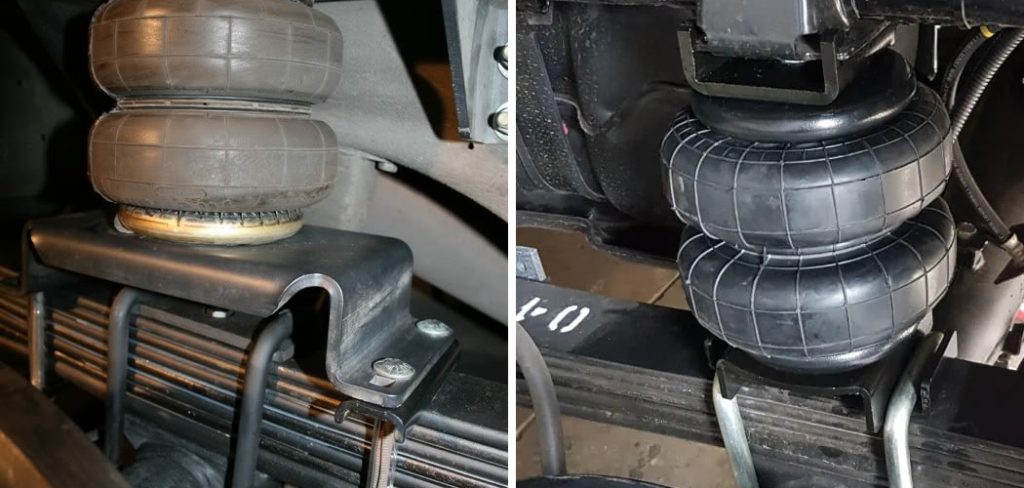
This guide on how to maintain leaf spring longevity will delve into the key factors that contribute to leaf spring longevity and provide practical advice on how to maintain and extend the life of your vehicle’s leaf springs. From routine inspections to load management and timely replacements, we will cover all the essential steps to keep your suspension system robust and reliable.
Understanding Leaf Spring Construction and Function
Before understanding how to maintain leaf spring longevity, it is crucial to understand how they are constructed and their function in a vehicle’s suspension system. Leaf springs consist of multiple layers of flexible metal strips, or “leaves,” stacked on top of each other and held together by clamps at each end. The clamps allow the leaves to move freely while providing support and stability.
Leaf springs work by absorbing road shock when the vehicle is in motion, compressing and expanding as needed to maintain a smooth ride. They also help distribute weight evenly across the suspension system, providing stability and preventing sagging or bottoming out.
Things You’ll Need
Jack and Jack Stands :
Regular inspections and maintenance of leaf springs require lifting the vehicle off the ground safely. A jack and jack stands are necessary to ensure that the vehicle is securely supported while you work.
Lubricant:
Keeping leaf springs well lubricated is crucial to preventing rust and corrosion, which can significantly affect their longevity. Use a high-quality lubricant specifically designed for metal components.
Torque Wrench:
Over-tightening or under-tightening the leaf spring clamps can lead to premature wear and damage. A torque wrench will help you tighten the clamps to the manufacturer’s recommended specifications.
Pry Bar:
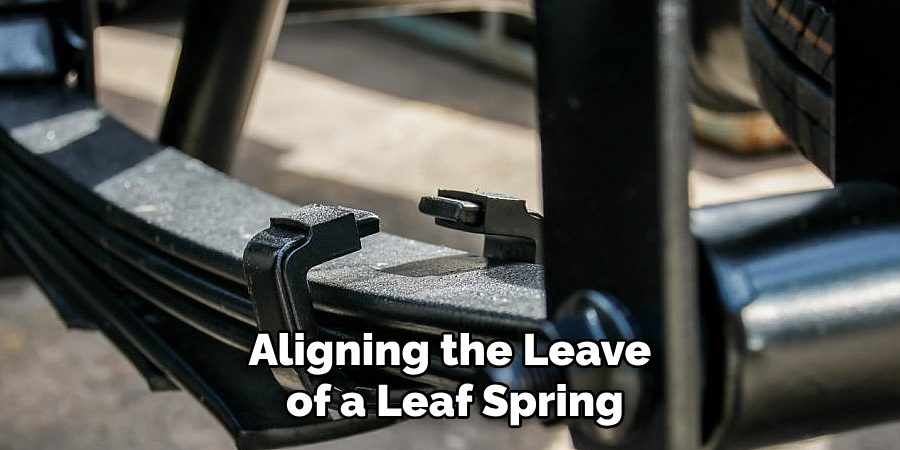
A pry bar is useful for separating and aligning the leaves of a leaf spring during inspections, maintenance, or replacements.
10 Step-by-step Guidelines on How to Maintain Leaf Spring Longevity
Step 1: Regular Inspection Routine
To maintain leaf spring longevity, it is essential to inspect the suspension system regularly. Experts recommend conducting a visual inspection every 6 months or at least every time you change your oil. Look for signs of excessive wear, damage, cracks, and rust on the leaves, clamps, and hangers. Replace any damaged or worn components immediately.
The earlier you catch any issues, the better chance you have of preventing further damage. You should also check for proper alignment and make sure all components are securely fastened. It is also a good idea to check for any leaks from the shock absorbers or hangers.
Step 2: Cleaning and Removing Debris
Clean the leaf springs regularly to prevent debris and dirt buildup, which can lead to rust and corrosion. Use a high-pressure hose or pressure washer to remove any stuck-on grime and dirt, taking care not to damage the leaves or clamps. Then, use a degreaser and a brush to remove any remaining residue.
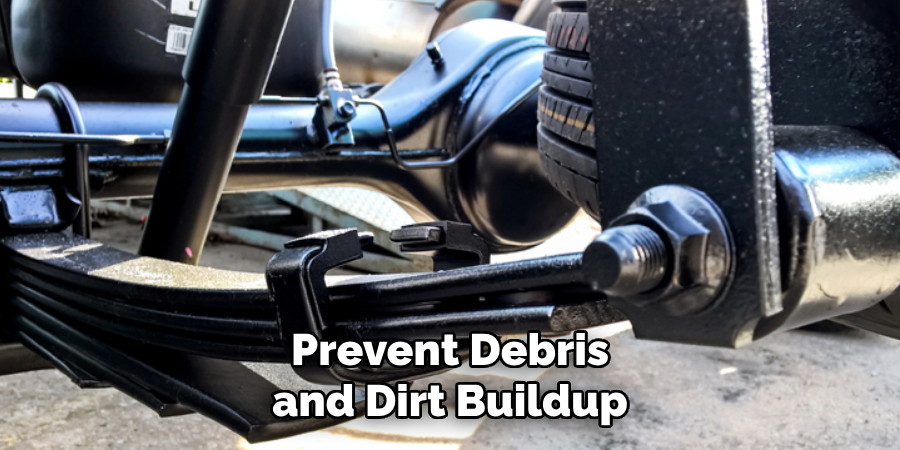
It is also crucial to clean the areas around the leaf springs and hangers to prevent dirt and debris from accumulating. But be careful not to spray water directly onto your vehicle’s brake components, as it can cause damage. The best practice is to cover them with plastic bags while cleaning.
Step 3: Lubrication and Greasing
Once the leaf springs are clean, apply a generous coat of lubricant to prevent rust and corrosion. Make sure to cover all the leaves and clamps thoroughly. Experts recommend using a high-quality silicone spray or lithium-based grease for maximum protection. It is also essential to lubricate the bushings, hangers, and bolts regularly.
Check your vehicle’s owner’s manual for recommended lubricants or ask a mechanic for advice. You can also use a grease gun to apply grease to hard-to-reach areas. The frequency of lubrication depends on your driving habits and the conditions you drive in, but it is recommended to do it at least every six months.
Step 4: Proper Loading and Weight Distribution
Overloading a vehicle can put excessive stress on the leaf springs, leading to premature wear and damage. Always make sure to load your vehicle within its weight capacity, ensuring even weight distribution across the suspension system.
If you regularly carry heavy loads, consider installing helper springs or airbags to support the leaf springs and ease their workload. You can also invest in a weight distribution hitch to evenly distribute weight between the front and rear axles. The more weight you add to the vehicle, the more strain it puts on the leaf springs, so be mindful of your load.
Step 5: Avoiding Overloading and Off-Roading Impact
In addition to proper loading and weight distribution, it is essential to avoid overloading your vehicle and exposing it to rough terrain as much as possible. The repeated stress from heavy loads and off-roading can cause significant damage to the leaf springs, compromising their longevity.
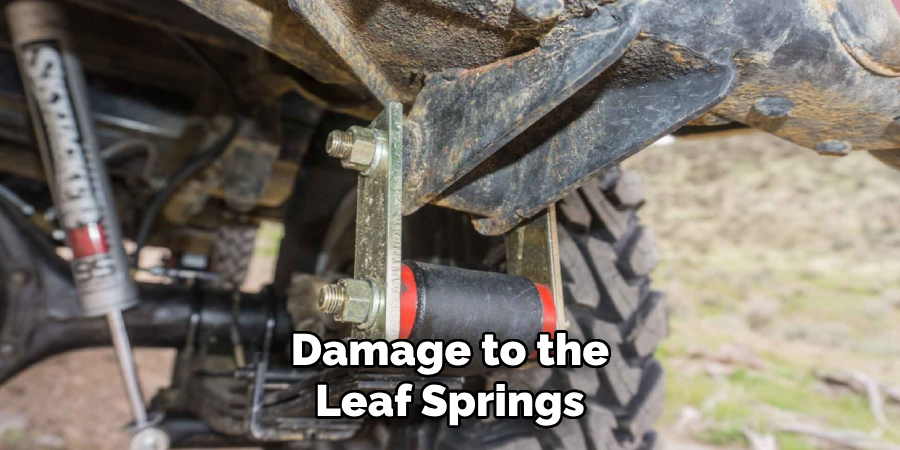
If you need to drive on rough terrain, take it slow and easy, avoiding sudden jolts that can put extra strain on the suspension system. The same applies to driving over potholes, speed bumps, and other obstacles on the road. It is also recommended to slow down when driving with a heavy load to minimize the impact on the leaf springs.
Step 6: Checking and Maintaining Alignment
Misaligned wheels can lead to uneven weight distribution across the suspension system, putting extra strain on the leaf springs. Regularly check and maintain proper wheel alignment to prevent premature wear and damage. If you notice any signs of misalignment, such as uneven tire wear or pulling to one side while driving, have a professional mechanic realign your wheels.
It is also crucial to have your alignment checked after any significant impact or collision. The longer you drive with misaligned wheels, the more strain it puts on your suspension system, including the leaf springs. But with proper alignment, you can significantly extend the lifespan of your leaf springs.
Step 7: Rust Prevention Measures
Rust and corrosion are one of the biggest enemies of leaf springs, greatly affecting their longevity. Besides regular cleaning and lubrication, there are other measures you can take to prevent rust from forming on your leaf springs. You can apply a rust inhibitor or paint specifically designed for metal surfaces to provide an extra layer of protection against the elements.

Another option is installing rubber spring covers to keep moisture and debris from getting inside the leaf springs. You can also regularly inspect and touch up any areas that show signs of rust or corrosion. It’s always better to be proactive in preventing rust rather than dealing with it once it has formed.
Step 8: Temperature and Climate Considerations
Extreme temperatures and harsh climates can also affect the longevity of your leaf springs. In areas with high humidity, moisture can accumulate on the leaves and cause rust and corrosion. On the other hand, in extremely hot or cold temperatures, metal components can expand or contract, putting stress on the leaf springs.
If you live in an area with extreme weather conditions, it is crucial to take extra measures to protect your leaf springs, such as regular cleaning and lubrication. You can also consider installing heavy-duty or weather-resistant leaf springs designed to withstand harsh climates.
Step 9: Replacing Damaged or Worn Components
As mentioned before, it is crucial to inspect your suspension system regularly and replace any damaged or worn components immediately. This includes not only the leaf springs but also the bushings, hangers, bolts, and other related parts. Even if one component looks slightly damaged, it can greatly affect the overall functioning of your suspension system and put extra strain on the leaf springs.
It is always better to address any issues early on before they turn into bigger and more costly problems. You can consult with a professional mechanic to determine the best course of action for replacing damaged or worn suspension components.
Step 10: Advanced Maintenance Techniques
Depending on your level of expertise and access to tools, you can also perform more advanced maintenance techniques on your leaf springs. This includes disassembling the suspension system, inspecting and cleaning individual components thoroughly, and reassembling with new parts as needed.
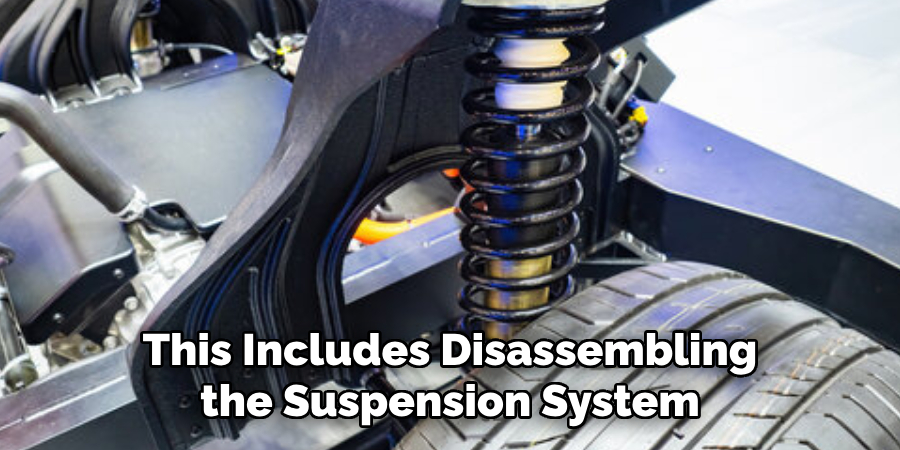
However, if you are not confident in performing these tasks yourself, it is always best to seek the help of a professional mechanic. They have the knowledge, experience, and proper tools to ensure your leaf springs are properly maintained and functioning at their best.
Following these steps on how to maintain leaf spring longevity and regularly maintaining your leaf springs will greatly extend their lifespan and ensure your suspension system is functioning properly. With proper care, you can avoid costly repairs and replacements down the road, as well as ensure a safe and smooth driving experience.
Remember to always consult your vehicle’s owner’s manual for specific maintenance recommendations and seek professional help if needed. Taking care of your leaf springs will not only benefit your vehicle but also your overall driving experience.
DIY vs. Professional Maintenance
Now that you know the steps to properly maintain your leaf springs, you may be wondering if it’s better to do it yourself or seek professional help. The answer ultimately depends on your level of expertise, access to tools and resources, and personal preference.
For those who have experience with vehicle maintenance and have the necessary tools, performing basic maintenance tasks such as cleaning, lubricating, and checking for wear and tear can easily be done at home. However, if you are not confident in your abilities or do not have the proper tools, it is best to seek professional help to ensure the job is done correctly.
When it comes to more advanced maintenance techniques such as disassembling and reassembling the suspension system or replacing damaged components, it is highly recommended to seek professional help. These tasks require specialized knowledge and tools, and any mistakes can lead to further damage or safety hazards.
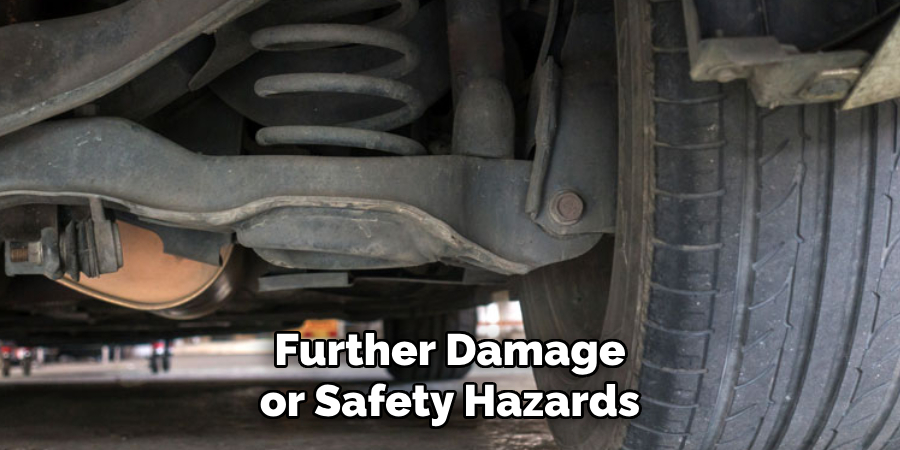
Compliance with Manufacturer Recommendations
It is important to note that while the steps outlined above are general guidelines for maintaining leaf springs, it is crucial to also follow your vehicle’s manufacturer’s recommendations. Different vehicles may have specific maintenance requirements and using the wrong products or techniques could do more harm than good. Always consult your owner’s manual for specific instructions and seek professional help if needed.
The manufacturer’s recommendations should always take precedence over general guidelines. The key is to regularly maintain your leaf springs and address any issues promptly, regardless of whether you choose to do it yourself or seek professional help. This will ensure the longevity of your leaf springs and keep your suspension system functioning at its best for years to come.
Safety Precautions During Maintenance
When performing maintenance on your leaf springs, it is essential to take proper safety precautions to avoid any injuries. This includes wearing protective gear such as gloves and eye protection and using appropriate tools for the job. It is also crucial to always work on a level surface and use jack stands to support the vehicle securely. Never work underneath a vehicle supported only by a jack.
Additionally, if you are using any chemicals or lubricants during maintenance, make sure to read and follow all safety instructions on the product labels. Always dispose of used materials properly according to local regulation. And if you are unsure about any aspect of the maintenance process, do not hesitate to seek professional help.
Additional Tips for Maintaining Leaf Springs
- If You Plan on Storing Your Vehicle for a Long Period, It is Recommended to Remove the Leaf Springs and Store Them Separately. This Will Prevent Any Additional Strain on the Suspension System and Extend the Lifespan of Your Leaf Springs.
- Regularly Check for Any Loose or Damaged Bolts and Tighten or Replace Them as Needed.
- If You Notice Any Unusual Noises or Vibrations While Driving, Do Not Ignore Them. They Could Be Signs of Worn or Damaged Leaf Springs.
- Consider Upgrading to Heavy-Duty or Custom Leaf Springs if You Frequently Carry Heavy Loads or Tow Trailers.
- Avoid Driving Over Rough Terrain or Potholes at High Speeds, as This Can Damage the Leaf Springs and Other Suspension Components.
By following these tips and guidelines, you can ensure the longevity and optimal performance of your leaf springs. Regular maintenance not only saves you money in the long run but also ensures a safe and comfortable driving experience. Take care of your leaf springs, and they will take care of you on the road.
Frequently Asked Questions
Q: How Often Should I Maintain My Leaf Springs?
A: It is recommended to perform basic maintenance tasks such as cleaning and lubricating every 3-6 months, or during every oil change. However, always follow your vehicle’s owner’s manual for specific recommendations.
Q: Can I Use Any Type of Lubricant on My Leaf Springs?
A: No, it is important to use a high-quality lubricant specifically designed for leaf springs. Using the wrong type of lubricant can do more harm than good. You can consult your owner’s manual or a professional mechanic for recommendations.

Q: How Do I Know When It’s Time to Replace My Leaf Springs?
A: If you notice any signs of wear and tear, such as cracks or corrosion, it is time to replace your leaf springs. Additionally, if your vehicle is experiencing unusual noises or vibrations while driving, it could be a sign of worn or damaged leaf springs. It is best to have a professional mechanic inspect and diagnose the issue.
Q: Can I Replace My Leaf Springs Myself?
A: It is not recommended to replace leaf springs on your own unless you have the necessary knowledge, tools, and experience. This task requires specialized knowledge and equipment, and any mistakes can lead to further damage or safety hazards. It is best to seek professional help for this task.
Q: Is It Necessary to Follow My Vehicle’s Manufacturer Recommendations for Leaf Spring Maintenance?
A: Yes, it is crucial to follow your vehicle’s manufacturer’s recommendations for maintenance. Each vehicle may have specific requirements, and using the wrong products or techniques could do more harm than good. Always consult your owner’s manual and seek professional help if needed.
Conclusion
Proper maintenance and timely attention to the condition of leaf springs are crucial for ensuring their longevity. Regular inspections, lubrication, and prompt replacement of worn parts can prevent costly repairs and downtime.
By following the best practices outlined in this guide on how to maintain leaf spring longevity, vehicle owners and maintenance personnel can extend the life of leaf springs, guaranteeing the consistent performance and safety of the vehicle’s suspension system. Remember, proactive care is the key to durability and reliability in automotive components.

About
JeepFixes Team is a skilled author for Jeep Fixes, bringing 6 years of expertise in crafting a wide range of jeep fixes. With a strong background in jeep fixes work, JeepFixes Team’s knowledge spans various types of fixtures, from decorative pieces to functional hardware, blending precision with creativity. His passion for jeep fixes and design has made him a trusted resource in the industry.
Professional Focus:
Expert in Jeep Fixes : JeepFixes Team aesthetic specializes in creating durable and innovative jeep fixes, offering both appeal and functionality. His work reflects a deep understanding of jeep fixes techniques and materials.
Sustainability Advocate : He is dedicated to using sustainable practices, ensuring that every fixture is crafted with eco-friendly methods while maintaining high-quality standards.
In his writing for jeep fixes, JeepFixes Team provides valuable insights into the latest trends, techniques, and practical advice for those passionate about jeep fixes, whether they are professionals or DIY enthusiasts. His focus on combining artistry with engineering helps others discover the true potential of jeep in design.
